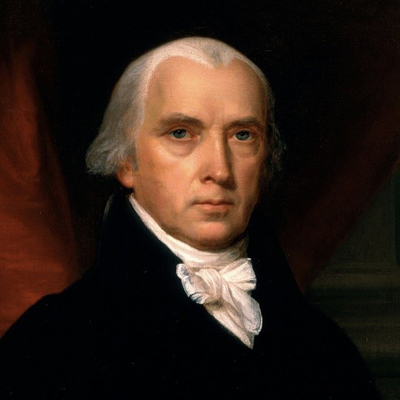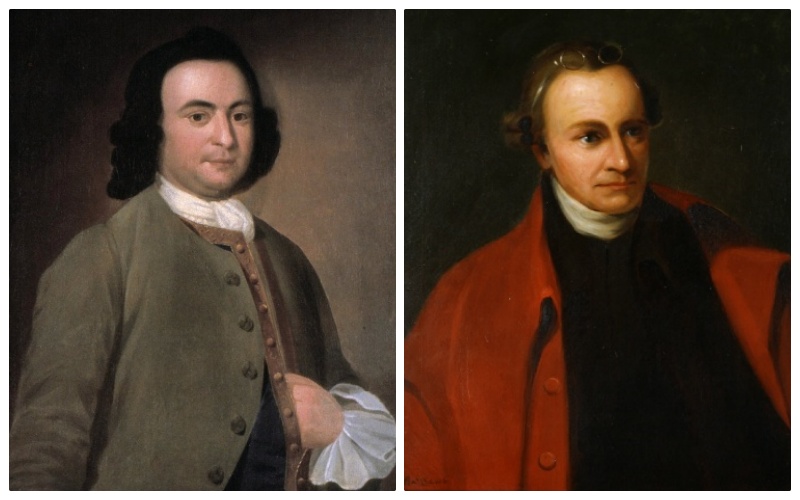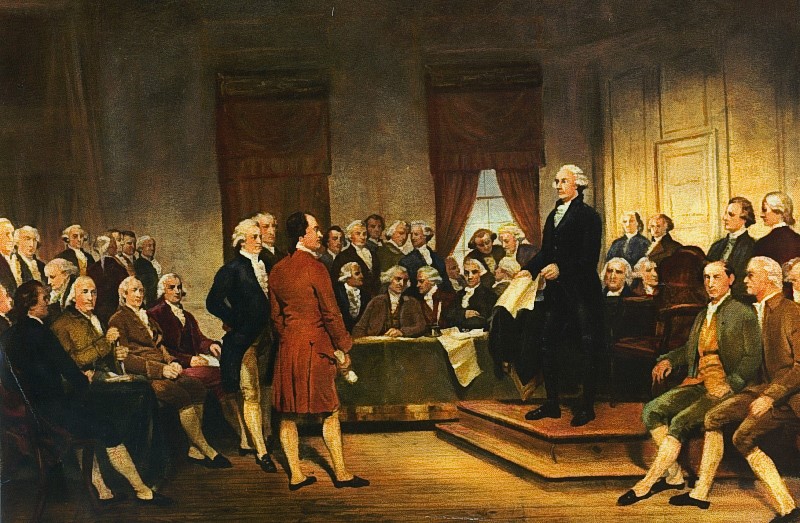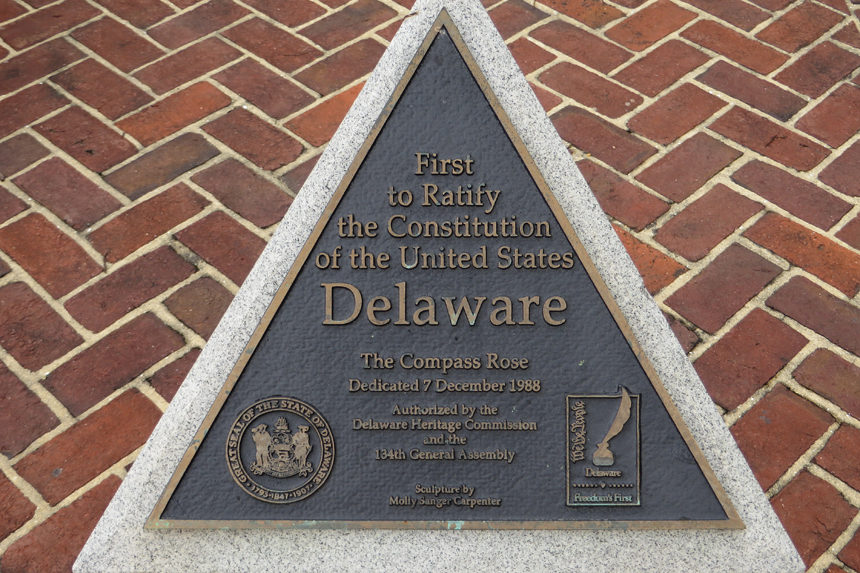This series by American studies professor Ben Railton explores the connections between America’s past and present.
Since 1933, December 7 has been proclaimed each year by the Governor of Delaware to be Delaware Day. It was on that day in 1787 when the 30 delegates to the state’s ratification convention met in Dover’s Golden Fleece Tavern and voted unanimously to ratify the newly drafted United States Constitution, famously making Delaware “the First State” to do so. As a French journalist living in New York City at the time observed of this momentous occasion, “Delaware has the advantage of having given the first signal of a revolution in the general government of the United States, and its example can only produce a good effect in other state conventions.”
Despite Delaware’s nickname and holiday, the ratification process represents a less well-known side to the Constitution and its aftermath, one that reveals a great deal not only about that defining document, but also about the fragile American ideals that they helped bring into being.
The overall ratification process offers a trio of vital lessons on those historical topics. The first lesson is that the draft of the Constitution signed by the Constitutional Convention delegates on September 17, 1787, was just that: a starting point, one intended to be debated by every state in the new nation. Of course many of those same delegates played important roles in the ongoing debate, as illustrated by the role of delegate (and Convention note taker) James Madison as one of three men (alongside Alexander Hamilton and John Jay) who produced the series of 85 arguments for the Constitution that became known as The Federalist Papers. But each and every ratification convention likewise featured many other figures from across the political and philosophical spectrum whose voices became part of the evolving debate as well, reflecting a process that sought to be as democratic as the government it was creating.

These voices and arguments became part of the evolving document in the form of the foundational first ten Amendments that became known as the Bill of Rights. Many of the most prominent Anti-Federalists, the opposition voices whose ideas led directly to the Bill of Rights, were part of the Virginia ratification convention, including Patrick Henry and George Mason (who was a particularly important influence on those first ten Amendments). But the debates that produced the Bill of Rights emerged in multiple ratification conventions, as illustrated by the convention in Massachusetts. There, the Anti-Federalists were led by two of the most significant Revolutionary leaders, John Hancock and Samuel Adams. With their leadership the Massachusetts ratification convention negotiated what came to be known as the “Massachusetts Compromise,” where the state ratified the Constitution with the understanding that the Bill of Rights would be added later. The eventual inclusion of those first ten Amendments reflect a process that allowed room for both opposition and an emphasis on individual rights alongside the creation of this federal system.

There is a third and far more frustrating overall lesson to be learned from the ratification debates: that they featured only the contributions of white men in each state. The same had of course been true of the Constitutional Convention (and the First and Second Continental Congresses that helped start the Revolution), so this problem was not in any way limited to ratification. But the ratification process was overtly designed to be more inclusive than the Convention had been, to allow far more perspectives to contribute to the Constitution. And while it’s possible to see the white men in these ratification debates as representing larger constituencies, the simple fact is that women, African Americans, and many other founding communities were not heard during the ratification debates. They would have to continue fighting to have a role in the evolving nation.

Beyond those overarching threads, two specific moments from individual state ratification conventions offer a pair of contrasting but interconnected stories about the Constitution and America. It was no surprise that Rhode Island’s ratification process was the most contested: the state had sent no delegates to the Constitutional Convention, contributing further to the existing nickname “Rogue Island” for this ornery community. Rhode Island likewise didn’t initially convene a ratification convention, choosing to send the Constitution to individual towns for voting. Only when Providence threatened to secede from Rhode Island if the state did not ratify, did Rhode Island finally call a convention in January 1790, which voted 34-32 for ratification in May. It was the final state to ratify, nearly a year into the new government’s existence. Rhode Island’s opposition, rooted in causes both practical (concerns over shipping tariffs) and philosophical (anger over the Constitution’s endorsement of slavery), illustrates the kinds of continued state and sectional battles that have throughout American history challenged the Constitution’s creation and empowerment of the federal government.
Another ratification convention offers an inspiring illustration of America’s founding ideals of both religious freedom and inclusion. The North Carolina ratification convention featured an extended debate over the Constitution’s “no religious test” Article VI clause (part of what I called in this column the Constitution’s most truly radical element). Delegate Henry Abbot pointedly remarked, critiquing that clause as allowing for too much religious diversity in the new government, that “The exclusion of religious tests is by many thought dangerous and impolitic. They suppose that if there be no religious test required, pagans, deists, and Mahometans might obtain offices among us, and that the senators and representatives might all be pagans.” And one of the convention’s key Federalists, James Iredell, responded with a stirring defense of the kind of inclusive ideals and national identity that the best of the Constitution embodies and pushes us to fight for:
But it is objected that the people of America may, perhaps, choose representatives who have no religion at all, and that pagans and Mahometans may be admitted into offices. But how is it possible to exclude any set of men, without taking away that principle of religious freedom which we ourselves so warmly contend for? This is the foundation on which persecution has been raised in every part of the world. The people in power were always right, and everybody else wrong. If you admit the least difference, the door to persecution is opened.
On this Delaware Day, let’s remember not just the Constitution, but also the ratification process that exemplifies all these divisive and defining aspects of our national ideals.
Become a Saturday Evening Post member and enjoy unlimited access. Subscribe now



